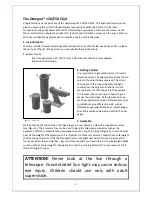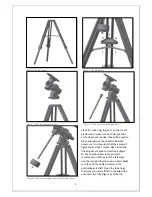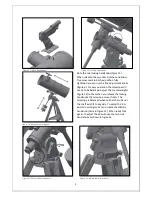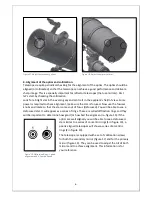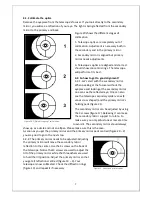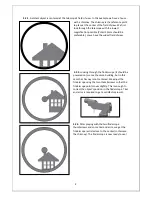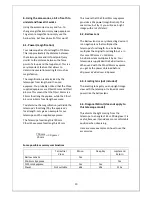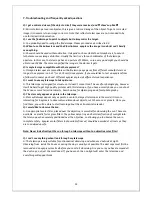
7
4.1. Collimate the optics.
Remove the eyepiece from the telescope’s focuser. If you look directly to the secondary
mirror, you will see a reflection of your eye. The light is being reflected from the secondary
mirror to the primary and back.
Figure 20 shows the different stages of
collimation.
1- Telescope optics are completely out of
collimation. Adjustment is necessary both in
the secondary and in the primary mirror.
2- Secondary mirror is aligned but primary
mirror needs adjustments.
3- Telescope´s optics are aligned and star test
should show concentric rings. The telescope
will perform at its best.
4.2. So how to get to good alignment?
4.2.1. Let’s start with the secondary mirror.
When peeking at the focuser without the
eyepiece and looking at the secondary mirror
one can see the reflected eye. One can also
see the telescope secondary spider vanes (4
vanes cross shaped) and the primary mirror’s
holding pads (figure 21).
The secondary mirror can be adjusted by using
the 3 screws (figure 17). Releasing it can make
the secondary mirror support to rotate. So
make sure you only adjust one screw at a time
to avoid it. The secondary mirror should always
show up as a circle and not an ellipse. Please make sure this is the case.
As soon as you get the primary mirror and the primary mirror pads centred (figure 20 – 2)
you are good to go to the next step.
4.2.2. The primary mirror needs to be adjusted. Adjusting
the primary mirror will move the secondary mirror
reflection to the center. Use the 6 screws on the back of
the telescope. Notice that 3 screws are used to adjust the
tilt of the primary mirror while the three others are used
to hold the tilt position. Adjust the primary mirror so that
you get all reflections centred (figure 19 – 3). Your
telescope is now collimated. Check the diffraction rings
(figure 19) and repeat it if necessary.
Figure 20. Different stages of collimation.
Figure 21. Vanes and primary pads.


